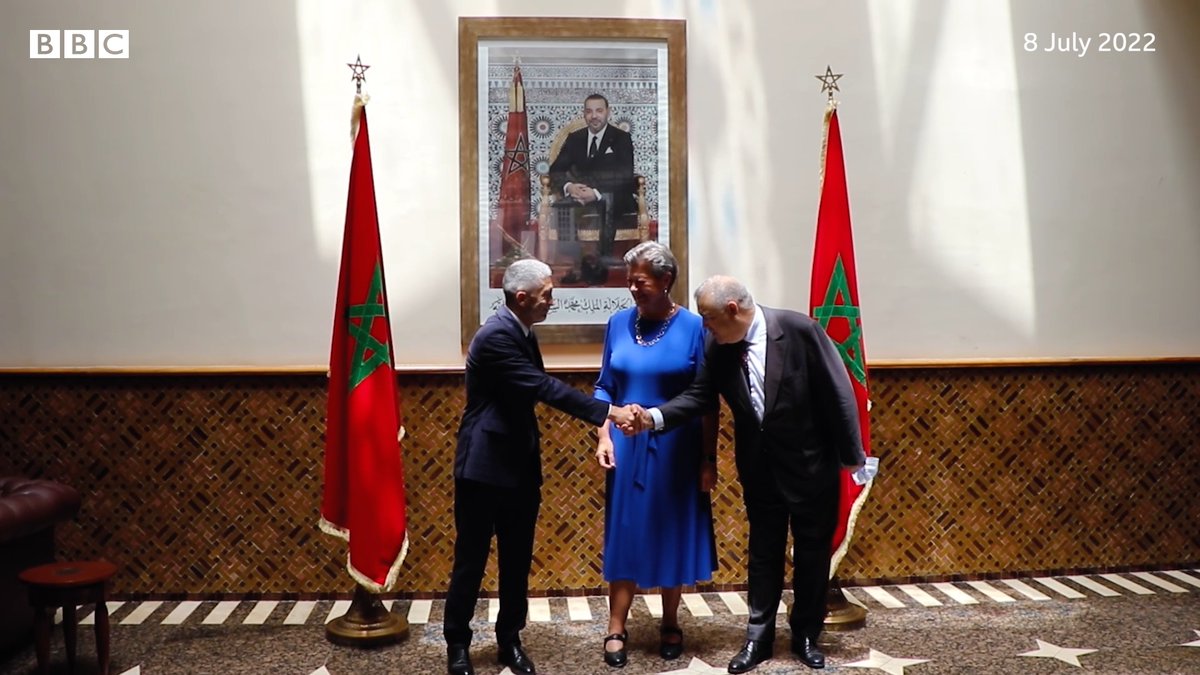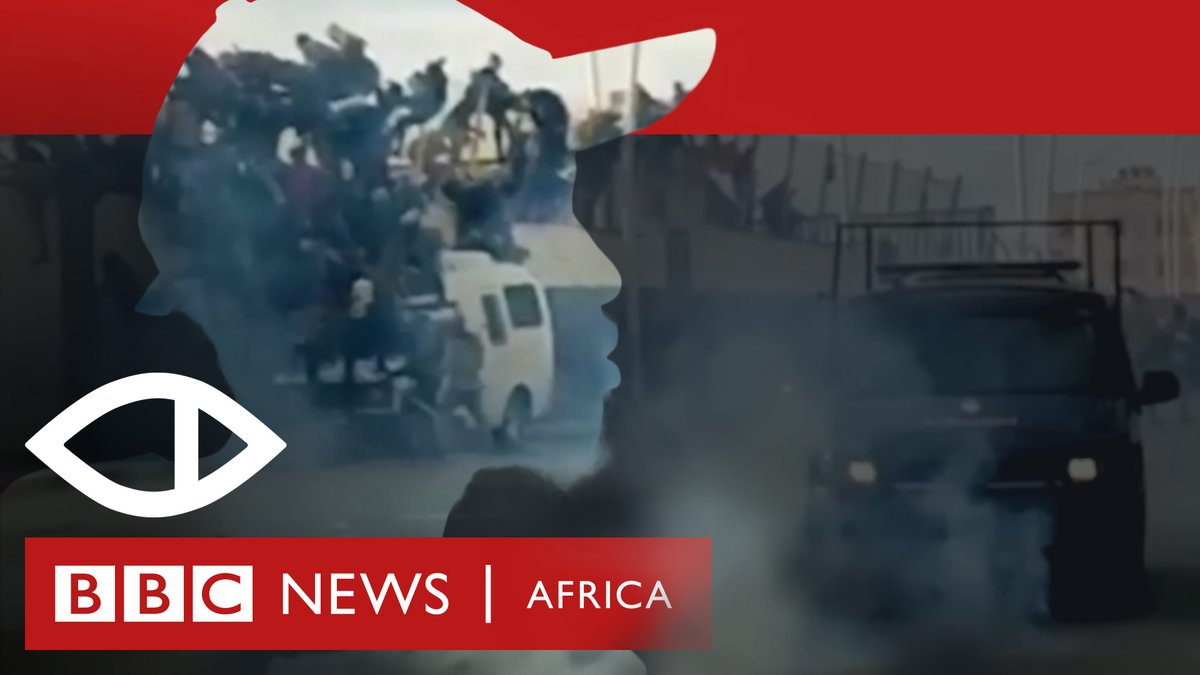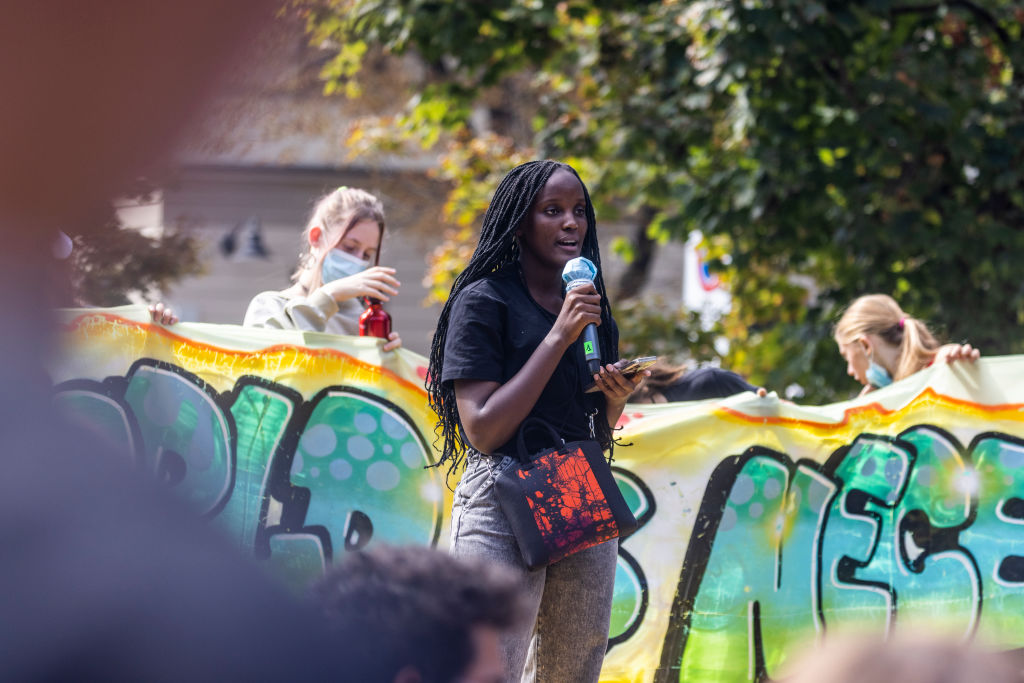
THREAD
In June, at least 24 African migrants died trying to cross into Europe.
#BBCAfricaEye investigated this horrifying event, unveiling new evidence and painful testimony, contradicting the official version of events.
This is what we found.
In June, at least 24 African migrants died trying to cross into Europe.
#BBCAfricaEye investigated this horrifying event, unveiling new evidence and painful testimony, contradicting the official version of events.
This is what we found.

#BBCAfricaEye verified dozens of public and private videos filmed on June 24th, 2022.
WARNING: the videos are distressing. But they hold vital visual evidence about what happened on the deadliest day on record at the land border between #Morocco and #Spain.
WARNING: the videos are distressing. But they hold vital visual evidence about what happened on the deadliest day on record at the land border between #Morocco and #Spain.
So how did this tragedy unfold?
We start in the hills surrounding the Spanish enclave of #Melilla - one of Europe’s two land borders with Africa.
The video shows clashes with Moroccan security forces on June 23rd - the day before the migrants stormed the border fence.
We start in the hills surrounding the Spanish enclave of #Melilla - one of Europe’s two land borders with Africa.
The video shows clashes with Moroccan security forces on June 23rd - the day before the migrants stormed the border fence.
The earliest video from the morning of the 24th shows the migrants taking this route towards the border…
They could be seen coming from a distance.
They could be seen coming from a distance.
Early in the morning, the crowd is seen marching towards the border via this road.
There appeared to be no attempt by authorities to stop the group reaching the border post of Barrio Chino which is now only a few hundred metres away.
There appeared to be no attempt by authorities to stop the group reaching the border post of Barrio Chino which is now only a few hundred metres away.
In this video, we see how police vans drive away as the crowd approaches in the distance.
Here we see the migrants as they move towards the border. Moroccan authorities said they were armed with “sticks, stones and sharp objects.”
Yousfe was part of this group. He was fleeing Sudan's war-torn Darfur region. He told us the sticks were to help them climb the wall.
Yousfe was part of this group. He was fleeing Sudan's war-torn Darfur region. He told us the sticks were to help them climb the wall.
As the front of the group reaches the fence, they try to force open this gate.
We can see security forces moving in from behind. The migrants get split into smaller groups.
Some made it through the first fence.
Others were targeted with tear gas.
Some made it through the first fence.
Others were targeted with tear gas.
The migrants gradually moved through this street, trying to climb the fence at different points.
Notice this corner - that’s this blue fence here - and behind it, is a small enclosed courtyard with a covered area in the middle.
We can also see a Moroccan flag on this corner, and a white van parked in the distance.
They will help us place some of the other videos.
We can also see a Moroccan flag on this corner, and a white van parked in the distance.
They will help us place some of the other videos.
At another point in this video, we see a woman being kicked from behind by one of the Moroccan security forces.
A video from this side of the road - we see the same white van - shows how migrants are approached by Moroccan security forces from both sides of the street.
The migrants say security forces blocked their path out, and continued to fire tear gas and smoke bombs towards them.
The migrants say security forces blocked their path out, and continued to fire tear gas and smoke bombs towards them.
One video shows how the border fence collapses under the weight of people climbing:
Many make it across the first few fences but then become stuck in enclosed areas of the border infrastructure - mainly the courtyard we saw earlier.
Large numbers of Moroccan security forces gathered outside the courtyard in front of the blue fence, preventing anyone from retreating.
They can be seen throwing tear gas and smoke bombs into the enclosed spaces.
They can be seen throwing tear gas and smoke bombs into the enclosed spaces.
This panorama gives us a clear view of the courtyard, which has now become the focus of the violence.
Some of the migrants told us people suffocated in a cloud of tear gas while trapped in the enclosed space.
At some point, the courtyard became so crowded, people panicked and there was a stampede.
Videos show migrants being crushed as they were pushed up against the gates.
Videos show migrants being crushed as they were pushed up against the gates.
While most were trapped in the courtyard, others made it across the border, into Spain.
But many were held back by Spanish security forces.
But many were held back by Spanish security forces.

This footage from local journalist Javier Bernardo, shows Moroccan forces entering Spanish territory to take migrants back to Morocco, without giving them the opportunity to claim asylum.
This practice is often referred to as “pushbacks” and the legality of it is contested.
This practice is often referred to as “pushbacks” and the legality of it is contested.
Yousfe was one of the migrants pushed back in this way.
He was brought back to the same location where the migrants were being detained on the ground.
He told us he was restrained and beaten so badly he lost consciousness for several hours.
He told us he was restrained and beaten so badly he lost consciousness for several hours.
Many migrants spoke of beatings and sustained injuries.
Videos show migrants detained in the courtyard and in the area in front of the blue fence.
In some of the videos, too graphic to show, we can see lifeless bodies being tossed around, people bleeding and in agony, seemingly being offered no assistance.
The migrants also told us they were not given any medical care.
The migrants also told us they were not given any medical care.
Later that day, buses collected the migrants - many of them severely injured - and took them to cities across Morocco.
Several migrants told us they witnessed one person die on their bus, they said no medical help was offered when asked.
Several migrants told us they witnessed one person die on their bus, they said no medical help was offered when asked.
The name of the man who died on the bus was Abdelnasir.
It is unclear what happened to the bodies of any of the victims.
It is unclear what happened to the bodies of any of the victims.

Several independent sources have told us there are currently dozens of bodies being held in the morgue in #Nador, the Moroccan city closest to #Melilla.
#BBCAfricaEye tried to investigate these claims but was denied access to the area by Moroccan authorities.
#BBCAfricaEye tried to investigate these claims but was denied access to the area by Moroccan authorities.
The Moroccan Association for Human Rights also said they believe Moroccan authorities were trying to avoid scrutiny.
In the days after the tragedy, they say they photographed authorities digging graves in part of the Nador cemetery reserved for migrants.
In the days after the tragedy, they say they photographed authorities digging graves in part of the Nador cemetery reserved for migrants.
So who is responsible for what happened? And could the fatal outcome have been avoided?
Both Moroccan and Spanish authorities are facing questions about their interventions that day.
Both Moroccan and Spanish authorities are facing questions about their interventions that day.
In a tweet, Spanish MP @JonInarritu, points to records of the Spanish National Geographical Institute and the Spanish land registry, which he says prove the events of June 24th happened in Spanish territory.
https://twitter.com/JonInarritu/status/1572150086347685893?s=20&t=CkSyBcNUIv7dTmCtUtoTaA
It is difficult to pinpoint exactly where the deaths occurred.
We are going to focus on two areas:
1) The enclosed courtyard
2) The Spanish-controlled entrance section leading into it
We are going to focus on two areas:
1) The enclosed courtyard
2) The Spanish-controlled entrance section leading into it

#BBCAfricaEye was given access to the border post in August. We filmed the enclosed courtyard through the fence.
We were told the territory on the side of the fence we were on, the entrance section with the blue turnstiles, is Spanish-controlled.
We were told the territory on the side of the fence we were on, the entrance section with the blue turnstiles, is Spanish-controlled.
Now, if we go back to the videos, most show lifeless and injured migrants here, in the enclosed courtyard, referred to by authorities as 'no man’s land.
But in this video, we can see the gate between the two areas has been pushed open and there is a crush of bodies spilling out of the enclosed courtyard into the entrance section with three lifeless bodies slumped against the blue gate.
This is the aftermath of that crush in the entrance section, the blue turnstiles are in the back.
This video is too graphic to show in full.
This video is too graphic to show in full.
The video shows at least one dead body lying on the floor in the entrance and other lifeless bodies are moved back from there by Moroccan forces.
This is the area we were told by Spanish authorities is under their control.
This is the area we were told by Spanish authorities is under their control.
Both Spanish and Moroccan authorities have begun internal investigations into what happened on June 24th, 2022.
But to date, neither have released any CCTV footage publicly or taken any responsibility for the high death toll and the apparent lack of medical care.
But to date, neither have released any CCTV footage publicly or taken any responsibility for the high death toll and the apparent lack of medical care.
There seems to be a significant difference between how Moroccan security forces responded to migrants on this occasion, compared to previous attempts in recent years.
This is a BBC report from May 2021:
This is a BBC report from May 2021:
At the end of 2021, the relationships between Spain and Morocco broke down on migration. Morocco wanted more financial support to defend the border.
In April 2022, both countries signed a new agreement on border control.
In April 2022, both countries signed a new agreement on border control.
Critics say Morocco’s response to migrants hardened again as a result of this agreement.
Two weeks after June 24th, the EU signed a new partnership agreement with Morocco on migration control and in August agreed to pay Morocco 500 million EUR to cover the next 5 years. 

The Moroccan government declined repeated requests for an interview and did not respond to the allegations made in this film.
The Moroccan Ministry of the Interior has publicly maintained that its security forces responded in line with legal protocols, and that all migrants received necessary medical assistance and care. They claim the group was extremely violent and organised by mafia.
We also put the allegations made in this film to the Spanish government - this is how they responded:
However, in October, the Spanish Ombudsman released its findings, stating that 470 migrants were pushed back across the border without considering legal provisions, and that the Ministry of the Interior had not shared all available CCTV with investigators.
https://twitter.com/DefensorPuebloE/status/1580971794819067904?s=20&t=7IYFk7Cmebj1jk5HbM1DKQ
In August, Yousfe made it across to Spain by boat. 18 people died doing that same journey that week.
He is in the process of applying for asylum in Spain. His friends in Morocco are still living on the streets and struggling to process the events at Barrio Chino.
He is in the process of applying for asylum in Spain. His friends in Morocco are still living on the streets and struggling to process the events at Barrio Chino.
This #BBCAfricaEye investigation was done by @bendobrown, @saracreta, @courtbembridge and @SVanhooymissen
Executive producer: @KarimTL
With thanks for private videos, testimony and information provided by local journalists, migrants and members of the public.
Executive producer: @KarimTL
With thanks for private videos, testimony and information provided by local journalists, migrants and members of the public.
You can also watch "Death on the Border" the full #BBCAfricaEye documentary on the BBC website here:
📽️ bbc.co.uk/programmes/p0d…
📽️ bbc.co.uk/programmes/p0d…

• • •
Missing some Tweet in this thread? You can try to
force a refresh














